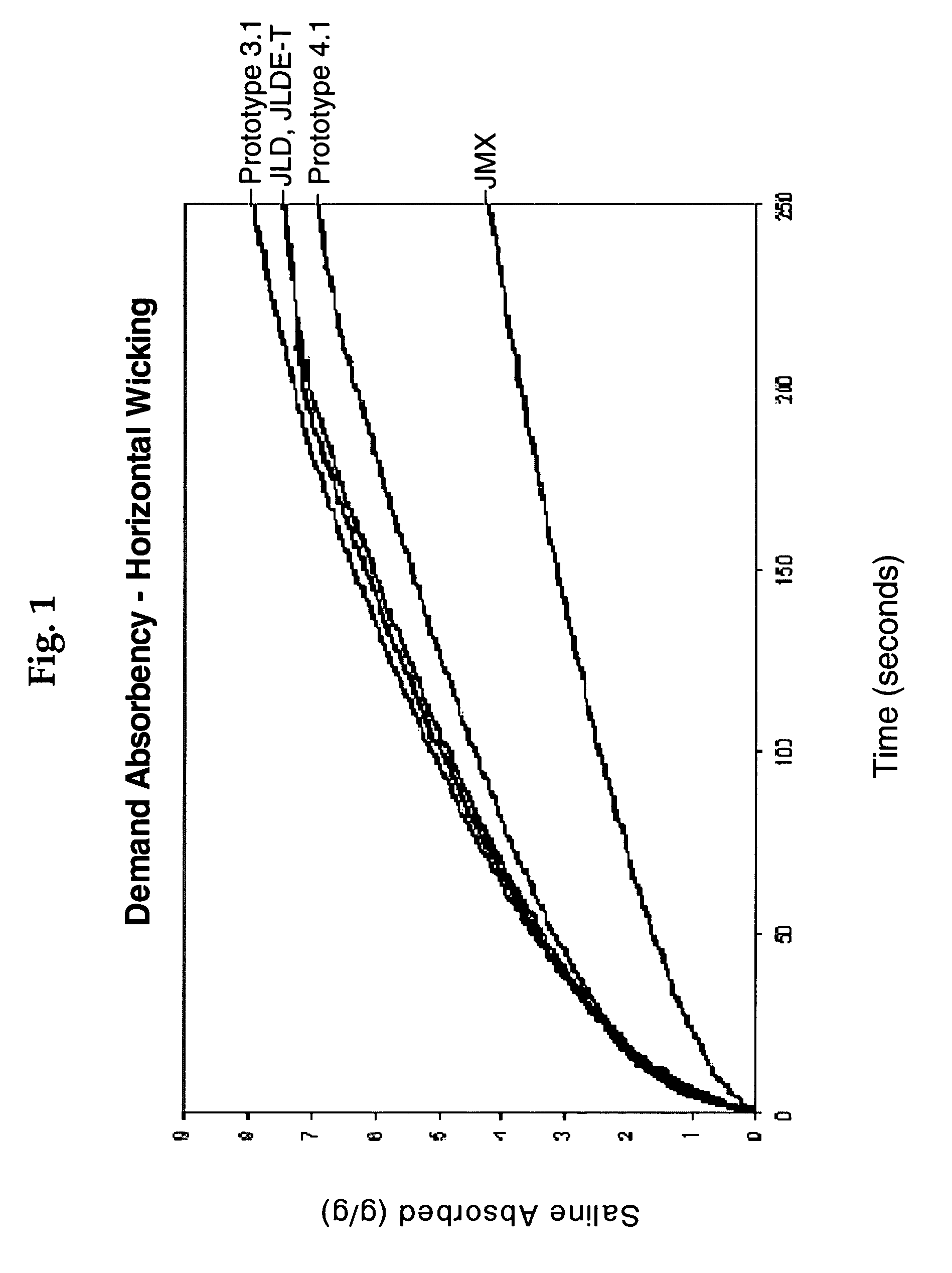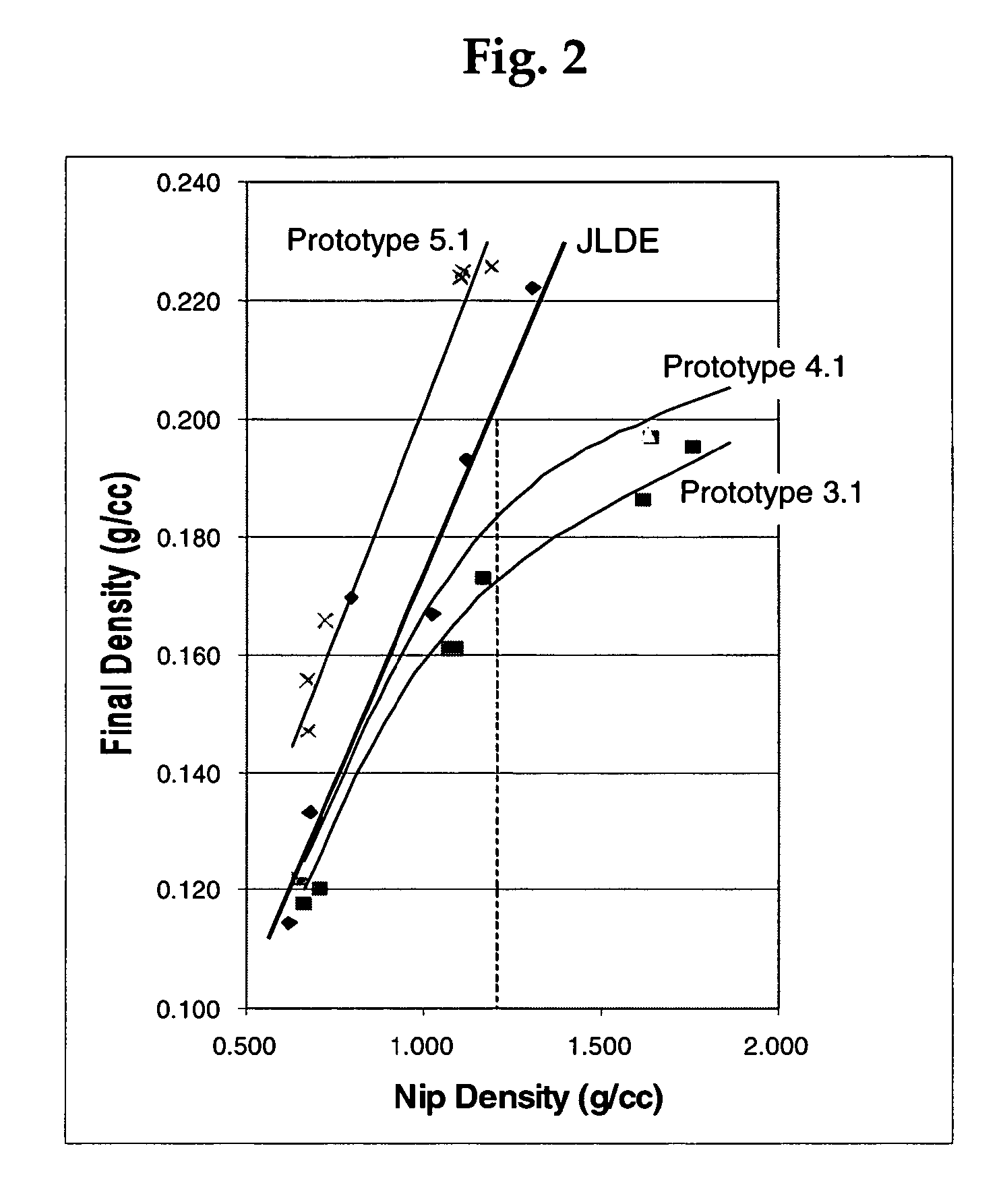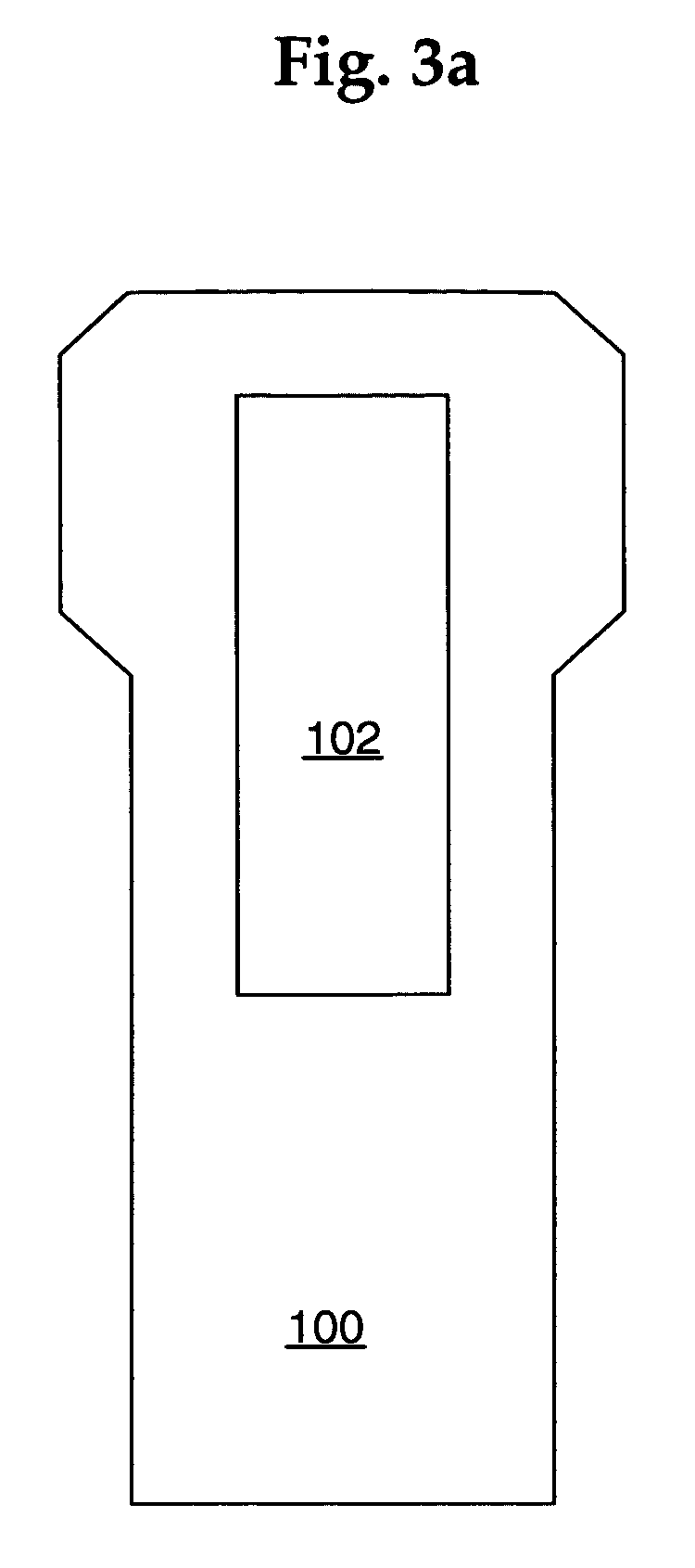Plasticizing formulation for fluff pulp and plasticized fluff pulp products made therefrom
a technology of plasticizing formulation and fluff pulp, which is applied in the directions of non-fibrous pulp addition, biocidal agent addition, bandages, etc., can solve the problems of liquid acquisition and wicking rate, the shift to thin and ultra thin products has not been without manufacturing problems, and the integrity of the absorbent core has been lost, so as to reduce the amount of kamas energy and reduce the content of knots and ni
- Summary
- Abstract
- Description
- Claims
- Application Information
AI Technical Summary
Problems solved by technology
Method used
Image
Examples
example 1
[0085]This example illustrates a representative method for making plasticized fluff pulp in roll form in accordance with an embodiment of present invention.
[0086]A plasticizing solution, containing 60 weight % of 1,4-CHDM (obtained from Eastman Chemical Company, Kingsport, Tenn.) in water was prepared. The plasticizing solution was applied to rolls of Rayfloc-JLD® (basis weight of 640 g / m2, commercially available from Rayonier, Inc., Jesup, Ga.) by spraying using a pilot scale K&M spraying system. The plasticizing solution was applied to the sheets at various levels to produce samples of plasticized fluff pulp having about 0.5 wt %, 1.0 wt %, 1.5 wt % and 2 wt % of 1,4-CHDM based on the pulp weight. The pulp samples treated with the plasticizing solution were placed in a room with a controlled humidity for at least 4 hours, and then evaluated for absorbency and energy of defiberization (Kamas energy). The absorbency results are summarized in the following table.
[0087]
TABLE 1Absorben...
example 2
[0088]This example illustrates a representative method for making plasticized fluff pulp in roll form in accordance with an embodiment of the present invention.
[0089]A plasticizing solution containing equal amounts by weight of 1,4-CHDM (40 wt %) and triacetin (40 wt %, obtained from Vitusa Products Inc., Berkeley Hts., N.J.) in water was prepared. The plasticizing solution was sprayed onto rolls of Rayfloc-JLD® pulp, using the method described in Example 1. The solution was sprayed at various levels to afford about 0.5 wt %, 1.0 wt %, 1.5 wt % and 2.0 wt % of the plasticizing formulation (1,4-CHDM and triacetin) based on the pulp weight. The plasticized pulp samples were placed in a room with a controlled humidity for at least 4 hours, and then evaluated for absorbency and energy of defiberization (Kamas energy). The absorbency results are summarized in Table 2 below.
[0090]
TABLE 2Absorbent properties of plasticized fluff pulp ofthe present invention treated with various amountsof t...
example 3
[0091]In this example, fiber quality and defiberization energy were evaluated for selected samples of the plasticized fluff pulps prepared as described above in Examples 1 and 2. The results are summarized in Table 3 below.
[0092]
TABLE 3Fiber Quality and Kamas Energy for plasticizedfluff pulp samples of the present inventionKnots andKamas EnergySamplenits (%)(Wh / kg)Rayfloc-9.943.44JLD ®B6.238.4E6.939.2F7.533.4G7.130.4H5.030.3
PUM
| Property | Measurement | Unit |
|---|---|---|
| thickness | aaaaa | aaaaa |
| thickness | aaaaa | aaaaa |
| weight % | aaaaa | aaaaa |
Abstract
Description
Claims
Application Information
 Login to View More
Login to View More - R&D
- Intellectual Property
- Life Sciences
- Materials
- Tech Scout
- Unparalleled Data Quality
- Higher Quality Content
- 60% Fewer Hallucinations
Browse by: Latest US Patents, China's latest patents, Technical Efficacy Thesaurus, Application Domain, Technology Topic, Popular Technical Reports.
© 2025 PatSnap. All rights reserved.Legal|Privacy policy|Modern Slavery Act Transparency Statement|Sitemap|About US| Contact US: help@patsnap.com



